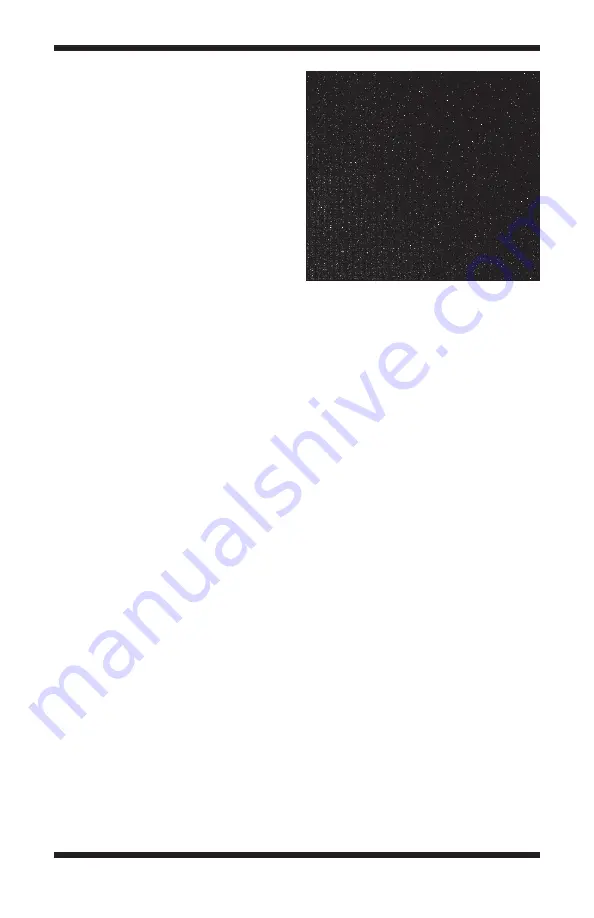
15
called your image Dumbbell and
you are capturing 10 images,
the sequence will save them
in your specified directory as
Dumbbell1L1.fit, Dumbbell2L1.fit,
Dumbbell3L1.fit and so on.
Naming conventions are most
important for StarShoot G4
Monochrome users who may be using
LRGB or narrowband filters. Change
your file name to indicate what filter
you are imaging through. For example,
Dummbell_Luminance, or Dummbell_
Red, etc.
Dark Frames
Dark frames are images taken with
no light coming into the camera. A
dark frame is typically taken with the
telescope’s objective capped. The only data in the image is the inherent camera
noise (
Figure 14). The noise contains the dark current, read noise (noise intro-
duced during camera readout and download) and hot pixels (bright dots in the
image). All of this noise exists in your raw astro-image too, which distracts from
the detail you want to see. To eliminate most of the camera noise, you can take
several dark frames, average them, then subtract them from your astro-images,
also called, “light” images.
Note: Make sure the CCD temperature is the same as was when took your light
frames.
To take dark frames for subtraction from “light” images:
1. Set the
Exposure Type to Dark in the Capture tab. Or if you are taking a
sequence of images, set the
Type in the Sequence window to Dark, this
will also assign a “D” suffix to your saved file name so you can easily identify
your darks later.
Note to StarShoot G4 Color users: You must take Raw Light frames in
monochrome BEFORE converting to color in order to utilize dark frames.
2. Use the same exposure time as the light images you have or will take. If
your light image is 60 seconds, the dark frame must also be 60 seconds.
3. Click
Start or Run Sequence if you are taking several darks. Camera
Studio will remind you to cover your telescope. Remember to always cover
your telescope before taking a dark – and be sure to uncover it again when
taking light frames.
Figure 14.
A dark frame contains the
thermal and background noise, as well as
any read noise. The same noise appears
in your “light” images. Dark frames isolate
the noise so it can later be subtracted from
your “light” images.
























